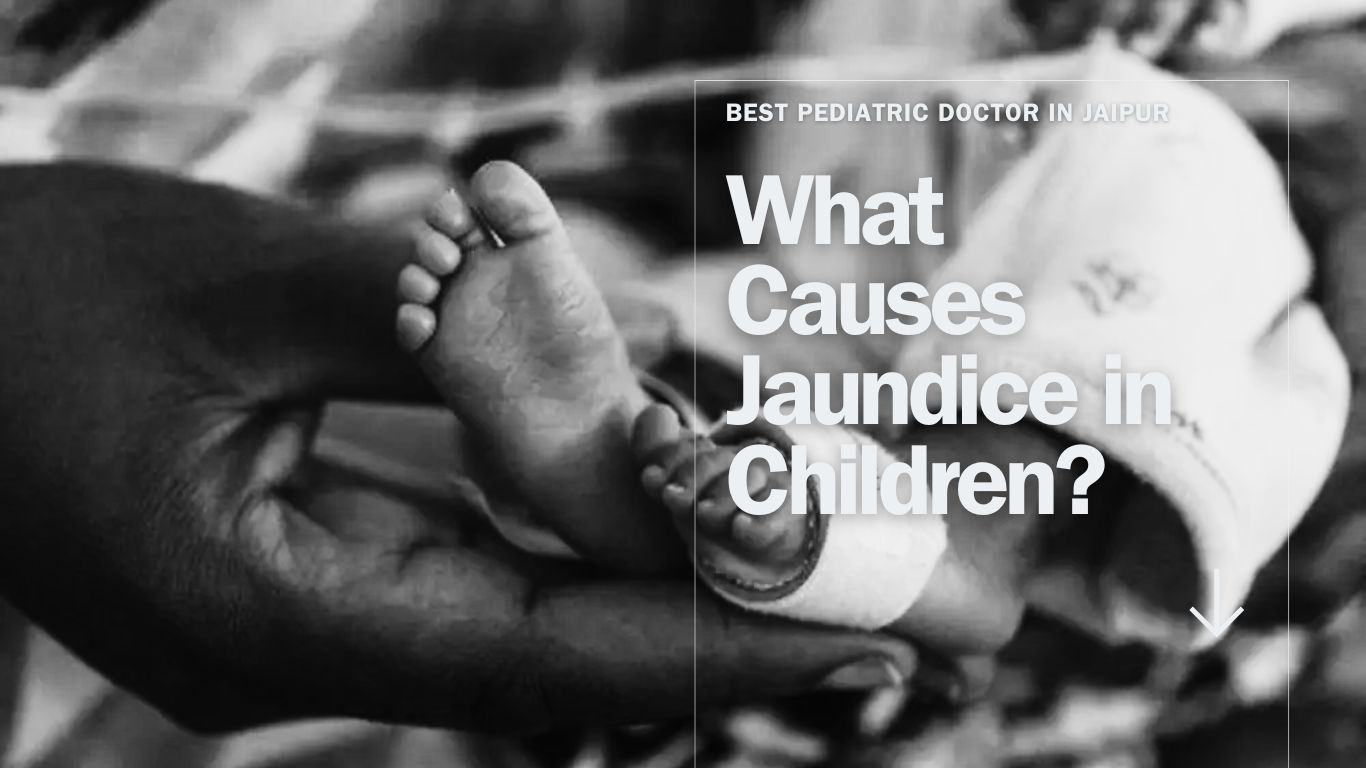
Jul 31, 2024
Jaundice is common in children, especially newborns. It causes yellowing of the skin and eyes. This yellowing occurs due to high bilirubin levels. It’s a yellow pigment produced when red blood cells break down. Jaundice is usually harmless. But, know its causes. Seek medical help if needed. This blog will explore the causes of jaundice in children. It includes insights from the top pediatric doctors at Saket Hospital in Jaipur.
The breakdown of red blood cells produces bilirubin. The liver processes bilirubin, which is then excreted in stool and urine. But, if the liver can’t process bilirubin, it builds up in the blood. This causes jaundice.
Physiological Jaundice: This is the most common type of jaundice in newborns. It usually appears between the second and fourth day after birth. It occurs due to the newborn’s immature liver. It takes time to process bilirubin. Physiological jaundice usually resolves within two weeks as the baby’s liver matures.
Breastfeeding Jaundice: This type of jaundice occurs in breastfed babies. It can be due to inadequate breast milk intake. This leads to dehydration and less excretion of bilirubin. Mothers need to ensure proper breastfeeding techniques and frequent feedings.
Breast Milk Jaundice: Some breastfed infants may develop jaundice. This is due to certain substances in the mother’s milk. They temporarily inhibit the baby’s liver from processing bilirubin. It usually appears after the first week of life. It can last for several weeks, but it is not harmful.
Pathological Jaundice: This type is more serious. It can occur due to various underlying conditions. It usually appears within the first 24 hours of life or persists beyond two weeks. Immediate medical attention is required to diagnose and treat the underlying cause.
Infections such as viral or bacterial infections can lead to jaundice in children. These infections can hurt the liver’s ability to process bilirubin or destroy red blood cells. This can raise bilirubin levels. Common infections include:
Sepsis: A severe bacterial infection that spreads through the blood. It affects the liver and other organs.
Hepatitis: Viral infections like hepatitis A, B, or C can inflame the liver. This impairs its function and causes jaundice.
Hemolytic anemia occurs when red blood cells are destroyed faster than they are made. This rapid destruction increases bilirubin production. It overwhelms the liver’s ability to process it. Conditions that can cause hemolytic anemia include:
Rh Incompatibility: If a mother and baby have different blood types, the mother’s immune system can attack the baby’s red blood cells.
G6PD Deficiency: A genetic disorder. It makes red blood cells more prone to breaking down.
Liver disorders can directly impact the liver’s ability to process bilirubin. Conditions include:
Biliary Atresia: A condition in newborns where the bile ducts are blocked or absent. This prevents the excretion of bilirubin.
Neonatal Hepatitis: Liver inflammation in newborns, often from a virus.
Some genetic conditions can impair the liver’s ability to process bilirubin. They can also cause excessive breakdown of red blood cells. Examples include:
Gilbert’s Syndrome: A genetic disorder. It causes mild jaundice. The liver does not process bilirubin properly.
Crigler-Najjar Syndrome is a rare genetic disorder. It severely impairs the liver’s ability to process bilirubin.
Premature babies are at higher risk for jaundice. Their livers are less developed and efficient at processing bilirubin. They may have more red blood cells that break down faster. This can raise bilirubin levels.
Diagnosing jaundice requires a detailed medical history and exam by the best pediatric doctors at Saket Hospital in Jaipur. Key diagnostic tests include:
Blood Tests: To measure bilirubin levels and identify underlying causes like infection or anemia.
Liver Function Tests: To assess the liver’s ability to process bilirubin.
Ultrasound or Imaging Studies: To evaluate the liver, gallbladder, and bile ducts.
Treatment for jaundice in children depends on the underlying cause and severity. Common treatments include:
Phototherapy: Using light to break down bilirubin in the skin.
Exchange Transfusion: Replacing the baby’s blood with fresh blood to lower bilirubin levels.
Treating Underlying Conditions: Addressing infections, managing liver disorders, or correcting anemia.
Adequate Breastfeeding: Ensuring proper breastfeeding techniques and frequency.
Early Medical Attention: Seeking prompt medical care if jaundice appears early or persists beyond two weeks.
Monitoring Premature Babies: Close monitoring of bilirubin levels in premature infants.
Jaundice is common in children, especially newborns. It’s usually not a cause for alarm. Knowing the causes and getting prompt medical help can ensure your child gets the best care. At Saket Hospital, our experts can diagnose and treat jaundice and its causes. They include the best pediatric doctors in Jaipur. If you’re worried about your child’s health, including jaundice, please consult our specialists. For advanced cases, our hospital in Jaipur‘s best neurosurgeon for neurological issues.
With proper care, you can manage jaundice. It will keep your child healthy.